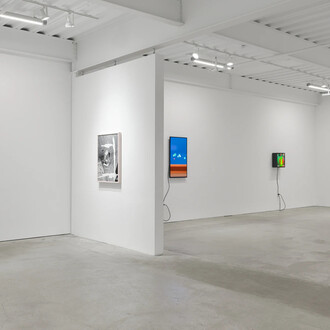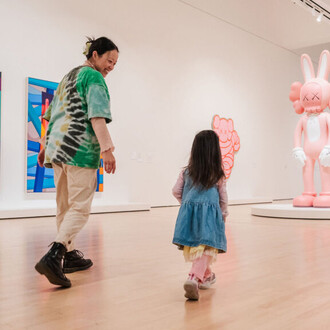New York-based bitforms gallery celebrates its fifteenth year with an anniversary exhibition at Minnesota Street Project in San Francisco. The curated presentation of works includes currently represented artists as well as those who have shaped the gallery’s identity over the years, demonstrating the program’s continued engagement with technologically informed practices.
Exhibiting artists include Jeffrey Blondes, Daniel Canogar, R. Luke DuBois, Claudia Hart, Yael Kanarek, Beryl Korot, Rafael Lozano-Hemmer, Sara Ludy, Manfred Mohr, Jonathan Monaghan, Mark Napier, Tristan Perich, Quayola, Casey Reas, Daniel Rozin, Björn Schülke, Siebren Versteeg, Addie Wagenknecht, Marina Zurkow, and Zimoun.
Since 2001, bitforms has become synonymous with “new media” art and the work that falls into this ever-shifting categorization. As such, the program spans a range of media from traditional to experimental. With new media being relative to each generation, the gallery represents established, mid-career, and emerging artists, showing the diversity of approaches to media over several generations.
In a moment of economic downturn and global uncertainty, the gallery opened its doors in November 2001 in Chelsea, the epicenter of the New York art world. At the same time, media art was gaining institutional support with the hype cycle of the dot-com bubble. Prior to bitforms’ opening, three exhibitions at major institutions signaled a sea change in the art world: Sfmoma opened "{010101: Art In Technological Times}"; the San Francisco Art Institute opened the traveling exhibition "Telematic Connections: The Virtual Embrace"; and the Whitney Museum of American Art opened "BitStreams." Despite the dot-com bubble bursting, bitforms gained momentum and carved out a space in the gallery scene as the only program exclusively representing artists critically engaged with technology.
bitforms’ fifteen-year anniversary comes at a moment when media art is garnering newfound attention, reminiscent to the beginning of the millennium. Within the past year, we’ve seen the landmark exhibition "Electronic Superhighway (2016 – 1966)" at the Whitechapel Gallery, spanning five decades of artists’ work impacted by computer and internet technologies; conservation and preservation of computer-based artworks gaining institutional support at the Guggenheim, MoMA, and Sfmoma; and the ever-increasing acquisition of post-internet art by collectors and institutions around the world. While contemporary technology is used for increasingly corporate ends, bitforms’ artists employ these same tools as a means for artistic expression.
Highlights of the exhibition include new Led wall sculptures by Daniel Canogar, a large-scale interactive work by Rafael Lozano-Hemmer, a sculpture that intercepts WiFi signals by Addie Wagenknecht, a drawing machine by Tristan Perich, algorithmically generated digital paintings by Siebren Versteeg, computer drawings from the 1970s by Manfred Mohr, a video compilation of Mark Napier’s "net.flag"––one of the first Internet artworks to be commissioned by a major institution, and works on paper inspired by Yael Kanarek’s browser-based "World of Awe" series. While the earliest works in the show date to the beginning of the 1970s, works by emerging artists––including Sara Ludy, Jonathan Monaghan, Quayola, and Addie Wagenknecht––showcase how a new generation of artists are engaging with contemporary technology. In their respective practices, these artists employ Second Life, computer-generated animation (CGI), lidar (light and radar three-dimensional scanning), and drone technologies.

















